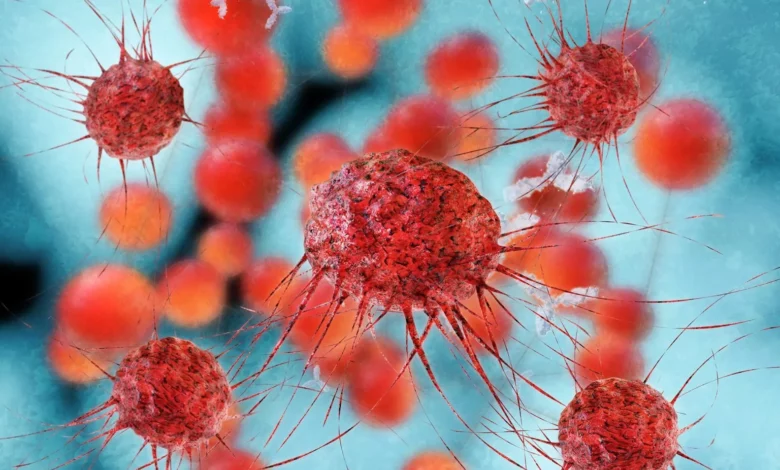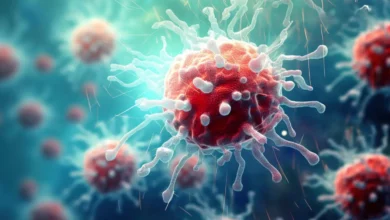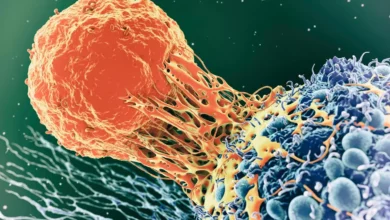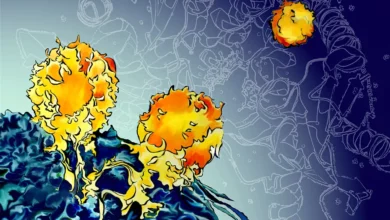
Cervical cancer is a form of cancer that develops in the cells of the cervix, the lowermost part of the uterus.
As part of the biggest omics study of its type, researchers at the University College London and the University of Southampton discovered that cervical cancer may be separated into two different molecular subgroups, one significantly more dangerous than the other.
The groundbreaking discoveries, which were reported in the journal Nature Communications, are described as a “major step forward” in the understanding of disease and provide a tantalizing new hint in determining the most effective therapies for specific individuals.
Cervical cancer is a major cause of cancer-related mortality in women. Every year, there are 528,000 new instances of cervical cancer and 266,000 deaths due to the condition globally. The human papillomavirus (HPV), a common virus that may be transmitted from one person to another through intercourse, is almost always to blame for its occurrence.
Around 850 women pass away from the disease each year, even in the UK, where NHS cervical screening has significantly lowered cancer incidence and the national HPV vaccination program aims to further decrease rates.
Researchers began the investigation by using a multi-omics approach, analyzing and comparing a variety of various markers, including DNA, RNA, proteins, and metabolites, in 236 cervical squamous cell carcinoma (CSCC) cases accessible in a publicly available US database.
This analysis revealed that the US cancers fell into two distinct ‘omics’ sub-groups, which they named C1 and C2. Further investigation revealed that C1 tumors contained a much higher number of specialized white blood cells, known as cytotoxic T cells, which are known to be potent serial killers of tumor cells. The findings suggested that patients with C1 tumors would have a stronger immune response within the tumor microenvironment.
Scientists then asked the question – do the two subtypes affect patients with cervical cancer in different ways?
To answer this, the team, which also included researchers from the University of Kent, the University of Cambridge, Oslo University Hospital, the University of Bergen, and the University of Innsbruck, derived molecular profiles and looked at clinical outcomes of a further 313 CSCC cases held in Norway and Austria, for which much more detailed patient follow-up data were available.
By doing this integrated analysis, researchers found that, as in the US cohort, nearly a quarter of patients fell into the C2 subtype and that again, C1 tumors contained far more killer T cells than C2 tumors. Importantly, the data also showed C2 was far more clinically aggressive, with worse outcomes for patients. This difference in outcomes between patients with C1 and C2 tumors was very similar across the US and European cohorts.
Patients with C2 tumors were more than twice as likely (hazard ratio 2.32) to die from their cervical cancer at any point during the follow-up period (up to 20 years), than those with C1 tumors. In terms of 5-year disease-specific survival, the rates were 79% survival for C1 and 66% survival for C2.
Next, by analyzing a further cohort of 94 Ugandan CSCC cases, the team found that C2 tumors were much more common than C1 tumors in patients who were also HIV-positive, underlining the link to a weaker anti-tumor immune response in this group.
Intriguingly, the C1/C2 grouping appeared to be more informative than the type of HPV present. Cervical cancer can be caused by at least 12 different ‘high-risk’ HPV types, and there have been conflicting reports as to whether the HPV type present in a cervical cancer influences the prognosis for the patient. This new study suggested that while certain HPV types were found more commonly in either C1 or C2 tumors, prognosis was linked to the group to which the tumor could be assigned, rather than the HPV type it contained.
Co-corresponding author, Tim Fenton, Associate Professor in Cancer Biology at the School of Cancer Sciences Centre for Cancer Immunology at the University of Southampton, said: “Despite major steps forward in preventing cervical cancer, many women still die from the disease. Our findings suggest that determining whether a patient has a C1 or a C2 cervical cancer could help in planning their treatment since it appears to provide additional prognostic information beyond that gained from clinical staging (examining the size and degree to which the tumor has spread beyond the cervix at the time of diagnosis).
“Given the differences in the anti-tumor immune response observed in C1 and C2 tumors, this classification might also be useful in predicting which patients are likely to benefit from emerging immunotherapy drugs such as pembrolizumab (Keytruda®, an immunotherapy drug recently approved for use in cervical cancer), but C1/C2 typing will need to be incorporated into clinical trials to test this.”
Co-corresponding author, Kerry Chester, Professor of Molecular Medicine at UCL Cancer Institute, said: “This collaborative multi-disciplinary research is a major step forward in our understanding of cervical cancer. Through careful molecular profiling and genetic analysis of cervical cancer tumors, we have gained valuable new insight into the tumor microenvironment and factors potentially making the cancer less aggressive in some patients.
“Inclusion of patient cohorts in Norway and Austria, for which highly detailed clinical information was available to complement the molecular data, were key factors in the success of the study.”
The research was primarily funded by the Debbie Fund, set up in memory of Deborah Phillips, who died of cervical cancer in 2010, aged 48.
Katy Moyle, Debbie Fund Chairperson, said: “We set up the Debbie Fund to improve the treatment options for women with cervical cancer, and that’s exactly what this research is set to do. We’re delighted to have enabled this highly collaborative project, and so impressed by the efforts of all the scientists involved. As always, we’re hugely grateful for the ongoing support of our donors, without whom this wouldn’t have been possible.”
Reference: “Integrated analysis of cervical squamous cell carcinoma cohorts from three continents reveals conserved subtypes of prognostic significance” by Ankur Chakravarthy, Ian Reddin, Stephen Henderson, Cindy Dong, Nerissa Kirkwood, Maxmilan Jeyakumar, Daniela Rothschild Rodriguez, Natalia Gonzalez Martinez, Jacqueline McDermott, Xiaoping Su, Nagayasau Egawa, Christina S. Fjeldbo, Vilde Eide Skingen, Heidi Lyng, Mari Kyllesø Halle, Camilla Krakstad, Afschin Soleiman, Susanne Sprung, Matt Lechner, Peter J. I. Ellis, Mark Wass, Martin Michaelis, Heidi Fiegl, Helga Salvesen, Gareth J. Thomas, John Doorbar, Kerry Chester, Andrew Feber, and Tim R. Fenton, 7 October 2022, Nature Communications.
DOI: 10.1038/s41467-022-33544-x





